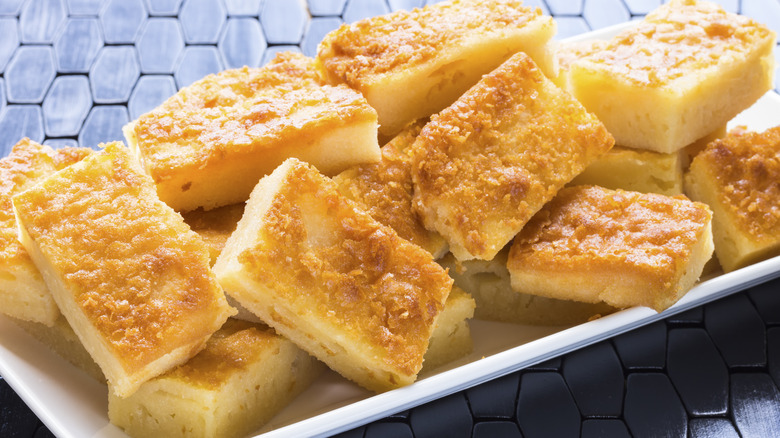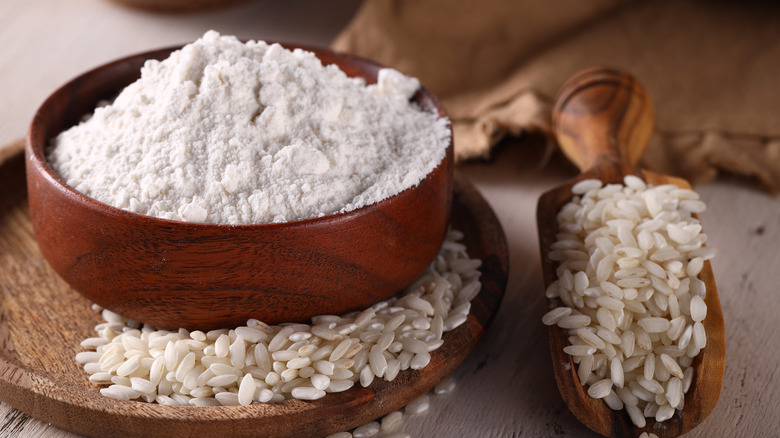Why Standard Rice Flour Won't Work For Butter Mochi
Butter mochi is a dessert that is a classic in Hawaii and has long enraptured people with its rich flavor and distinct chewy texture. On the surface, it looks just like a layer of yellow cake, but hidden underneath this golden crust is a spongy cake oozing with decadent dairy-rich flavor that features ingredients like sugar, eggs, and butter. However, the real secret behind this signature butter mochi texture is an Asian ingredient not commonly used in America — mochiko rice flour.
Though it may seem identical to other rice flour, mochiko rice flour has a distinct chemical makeup that makes it essential for making that bouncy butter mochi texture. Much of this difference lies in the type of rice it's milled from. The rice is known as mochigome, a short-gained variety that is particularly sweet and glutinous.
To make it, Japanese millers soak the rice to remove the outer hull, then dry and pulverize it into a starchy powder. Plain rice flour, on the other hand, is made with medium to long-grain rice. So if you decide to opt for regular rice flour, you'll be sabotaging the flexible texture and taste of the baked goods.
How to find mochiko rice flour and which brands to look for
So how should you go about finding and purchasing the proper rice flour for the job? First, look for rice flour that specifically states "mochiko" on the exterior. Another tell-tale phrase is "sweet white rice flour," which also refers to mochiko rice flour. The key word in that string is "sweet," as regular rice flour may sport the label white rice flour. Glutinous can also be used to denote mochiko rice flour, so keep an eye out for that as well. Popular brands include Koda Farms and Bob's Red Mill, both of which you can find online and in Asian specialty stores.
Note that many Japanese cooks also use shiratamako, another type of rice flour made from mochigome grains, to make their type of mochi. Shiratamako differs from mochiko in the way the rice is processed, as millers will grind shiratamako while wet, leading to a slightly different texture. Still, you shouldn't run into much confusion between the two, because the shiratamako variety is almost exclusively found in Japan.
With these tips in mind and the right rice flour on hand, you'll be sure to make an authentic batch of butter mochi worthy of your next get-together.

